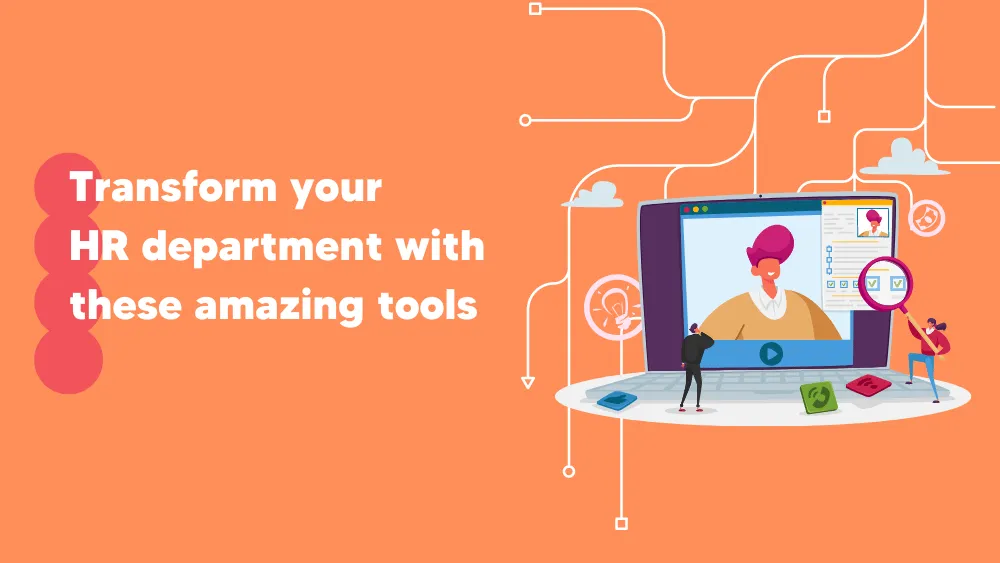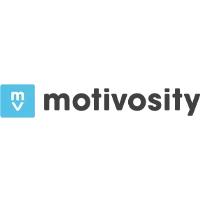
Best HR Software
What is an HR Software?
Finding the best HR Software is no small task. First, you must evaluate your requirements and see if they fit your budget. Every company needs some Human resource solution. After all, it solves the core problem of tracking employees, handling them, and ensuring they get their paychecks at the right time. With the right HR Software, you can address a big part of the company’s workflow and ensure smooth running with less manual work.
HR(Human Resource) Software is digital software that enables businesses to manage their daily HR tasks. With it, organizations can reach their HR goals and ensure that all workforce management needs are met, which includes meeting employee satisfaction and improving productivity.
HR Software initially started to solve an organization’s recruitment and payroll processes. However, its definition changed with time depending on ever-growing needs, technological growth, and end-user demands. As a result, the HR program has now evolved to a broader aspect and can also be known as Human Resources Information System(HRIS) and Human Resources Management System(HRMS). These systems optimize and manage daily HR tasks while ensuring to meet long-term organization HR goals.
Top Software for
Compare HR Software
Remote
Deel
Table of Contents
What can businesses do with an HR (Human Resources) solution?
In short, a good HR solution can manage the following:
- Hiring
- Managing
- Recruiting
- Engaging employees
- Developing
HR Software also has different types that deal with different organizational goals. Let’s check a few of them below:
-
Performance Management
It follows and improves employee performance through proper employee skills evaluation. HR managers and professionals can evaluate employee performance, guide & track employee skills, and improve them.
-
Applicant Tracking System(ATS)
The ATS takes care of an organization’s hiring process. Its main goal is to simplify hiring while storing and managing applicant data, screening applications, job applications, responses, etc.
-
Human Resource Information System(HRIS)
HRIS offers a more comprehensive and feature-rich approach than traditional HR with more features. For example, an HRIS system can include proper employee data storage solutions, recruitment solutions, managing benefits and payrolls, and ensuring that organization meets legal and regulatory requirements.
-
Human Capital Management(HCM)
HCM, just like HRIS, offers a complete HR solution. It offers various features, including employee acquisition and development, streamlining processes, and tracking. However, the key features that define HCM include onboarding, training, recruitment, and performance management.
-
Human Resources Management Systems(HRMS)
HRMS is a complex take on HR solutions. It offers a combination of information technology and human resource management. That’s why it also offers one of the extensive feature-set, including candidate recruitment, career progression, attendance tracking, payroll management, succession planning, performance reviews, and employee information management.
-
Onboarding
An Onboarding HR solution is completely dedicated to managing the onboarding process of new hires. The key onboarding features include employee questionnaires, training tracking, electronic signatures, and so on. It also includes automation features to fine-tune the onboarding process.
-
Employee Engagement
This solution is all about fine-tuning and improving employee engagement.
HR technology is not new. It started in the 1970s when computers managed human capital data. However, HR solutions became more popular in the 1980s and 1990s.
What does an HR system do?
HR systems are designed to look after various Human resources tasks, including keeping employee information intact and accessible and improving employee productivity and overall satisfaction.
As there are different types of HR systems, a typical HR system can do the following:
- Ensure complete digitization of employee data.
- Easy accessibility for employee data.
- Tedious HR tasks automation such as payroll
- Track employee performance and growth
- Analyze data to get insights on employee performance
- Complete automation for pre-boarding, onboarding, and offboarding
Why HR software is important
At the core of any organization, there are employees. Therefore, if an organization wants to succeed, it must manage its employees, improving their productivity and satisfaction.
To do all of these, you need an HR solution. It brings automation to solve tedious HR tasks and helps HR managers to implement new experience strategies to meet core HR goals.
By using HR, companies can automate two big parts of employee management: onboarding and offboarding. Also, it takes care of administrative work such as payroll, attendance, and time off. This automation saves a lot of time and organization revenue.
Apart from that, it also digitizes employee data with proper employee data management. This data is crucial to managing automation and compliance. It is also important for other HR tasks such as payroll, performance, attendance, etc. Lastly, HR solutions should improve communication within a big organization with streamlined communication and feedback channel.
Benefits of using an HR software
HR software brings multiple benefits to an organization. These benefits include:
- Improved productivity and efficiency: By using HR solutions, organizations deliver better productivity and efficiency thanks to better data storage and management. It also adds efficiency to other processes.
- Employee development: HR tools also contain talent acquisition and management. A robust HR solution allows hiring managers to fill vacant seats faster. Moreover, it helps onboard new hires and improves their morale, productivity, and happiness through well-defined strategies.
- Employee experience: It is very important to engage employees on how their work impacts company success and the general side of things. HR tools with definitive strategies can engage employees and improve their experience and morale.
- Cost savings: Generally, solutions reduce costs. This is also true for HR systems, as they organize the whole process and make it easy to manage HR tasks to meet the organization’s HR goals. The reduced cost comes from better employee data management, automation, and the ability to gain insights, which can be further used to improve processes and process workflow.
- Regulatory compliance: All businesses must comply with local and federal laws related to their industry and location. HR solutions ensure that your organization meets regulatory compliance pertaining to data, privacy, and labor laws.
- Fewer errors: With automation playing a big part in current HR systems, you get fewer errors. Managers need to ensure data correction during manual data entry. This way, organizations benefit as they incur fewer penalties.
- Attendance monitoring: HR software is equipped with proper attendance monitoring that ensures proper employee time management.
- Data security: Human resources management systems are equipped with proper data security so that data doesn’t leak. This protects employee data and ensures organizations don’t fall prey to ransomware.
Key features of HR tools
HR tools are becoming more extensive with each passing day. And so does their features. Below are some of the key features of HR tools:
- Employee profiles
- Employee databases
- Reporting
- Self-service portal
- Benefits administration
- Payroll management
- Time tracking
- Performance evaluation
- Recruitment and tracking
- Employee training
- Talent retention
- Analytics and data management
How much do human resources management software(HR) costs?
The cost of HR software depends on multiple factors. The prices vary depending on the vendor, feature-set, location, and other factors. Also, different HR software companies use different pricing models, making it hard for organizations to get a good idea of what to expect. However, you can break it down and get a good cost estimate.
Pay per employee/month
The “pay per employee/month” model is common among HR software vendors. Here, the price range from $1-$10 per employee per month. Generally, the vendor takes an up-front one-time setup fee and follows the model.
They make a profit if you grow, considering that you need to pay for each employee that joins your company. Examples of HR solutions that follow this model are Calamari and breatheHR.
Pay per user/per month
Next comes the Pay per user/per month. It is a different take and doesn’t take all employee roles but that of administrative users. However, the definition of users can also contain all employees. In these models, the vendor provides a self-service portal where users can log in and use the HR software features.
This model also has one-time implementation fees and costs anywhere from $5 to $20 per user per month. Examples include QuickBase and Zoho People.
One-time payment
Many HR software vendors also offer one-time payments, ranging from $500 to $10000 for small to medium-scale businesses. For enterprise organizations, it can go from $10,000 to $100,000. In this model, the HR vendor also has an annual support fee. Examples of HR vendors using the pricing model include Staff Files and Optimum HR.
Lastly, you can also use free software that is open source or offer a freemium service.
HRIS, HRMS, HCM. Is there any difference between them?
HRIS stands for Human Resource Information System. It is a sum of a core HR system with data management that deals with payroll, benefits, workforce management, and core and payroll HR. With HRIS, businesses can handle data, policies, and procedures more eloquently. It enables businesses to communicate more highly, resulting in strategic and meaningful work. It frees a lot of basic workloads and monotonous work.
Next comes HRMS(Human Resources Management System), which builds on HRIS and offers a more comprehensive and complete software suite. This helps companies to manage HR functions more efficiently with a focus on analysis. HRIS best suits the modern workforce and covers almost all HR functions, including recruitment, talent management, employee attendance, etc.
HCM(Human Capital Management) is an umbrella term for HR applications complete suite hosted on the cloud. HCM is primarily focused on improving employee experience. That’s why it offers tools such as AI, digital assistants, and proper communication tools for teams.
In addition, to ensure improved employee experience, HCM offers better talent management tools such as succession planning, learning, performance management, etc. It also offers workforce modeling and strategic workforce planning.
Important Integrations for an HR management software
Not all HR management software comes with the features you desire. For example, many businesses start with their standalone application tracking system(ATS). They then feed all the data from ATS to their human resource management solution, generally an HRIS or HRMS.
With recruitment covered, next comes payroll and employee time clock. Businesses can also integrate proper analytics systems to understand their hiring process and employee satisfaction. Besides that, many businesses also integrate business intelligence(BI) software to get a better idea from their data.
Which HR system is best for your business?
The market is full of options, and that’s where Tekpon comes in. We cover all the major HR providers on Tekpon’s HR software category page. Here, you can find the right HR solution for your business that falls under your budget.
If you are still confused, then you can start chatting with us. We have a team of experts who can help you better understand your requirement and pick the right tool for your business. Finally, you can contact the respective vendors with a few recommendations to get the complete picture.
HR Software Insights





















